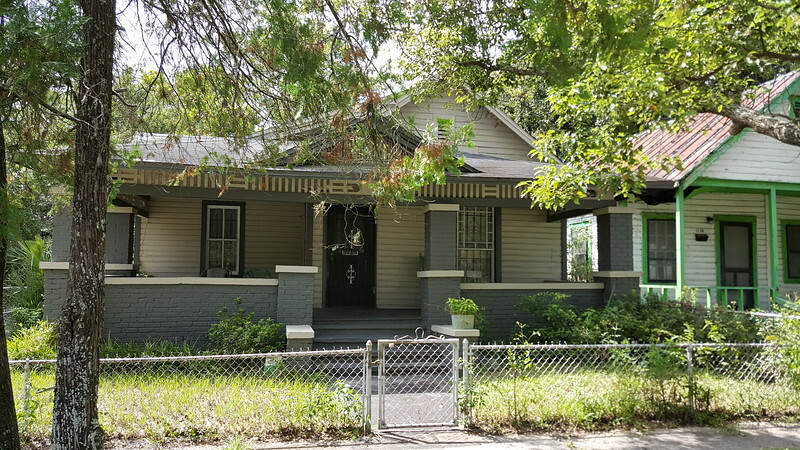
With the creation of the Sadowski Housing Trust Fund to support affordable housing in 1992, Florida led the way in ensuring that low-income residents had a place to live. But failure to fund the trust over the last 20 years has contributed to Florida’s entering a full-blown housing crisis — still, it just may be our best tool for turning the tide.
Birth of the Sadowski Trust Fund

In the 1990s, Florida had reached a point where high growth and slow construction of affordable housing were coming to a head. The state government estimated that by 2000, Florida would need an additional 900,000 rental units and 1.4 million for-sale homes for its lowest-income residents – and at its current rate, it would be 322,000 units short.
A coalition of organizations across the state came together in 1991 and proposed an ambitious solution: a trust fund with its own revenue stream dedicated specifically to providing affordable housing for low-income Floridians. Their work led to the William E. Sadowski Affordable Housing Act of 1992, in which the Florida Legislature and Gov. Lawton Chiles earmarked a small portion of the state’s documentary stamp tax on real estate sales to go into two trusts. Seventy percent of the money goes into the State Housing Initiatives Partnership (SHIP) fund, which offers local assistance for homeowners for down payments, repairs and rental aid. The remaining 30% goes into the State Apartment Incentive Loan (SAIL) fund, which provides incentives for developers to create more affordable housing units.

Collectively, the two funds are known as the Sadowski Trust Fund, named after one of the bill’s chief proponents. Bill Sadowski served under Chiles as secretary of the Department of Community Affairs before his death in a plane crash in April 1992. An environmental lawyer and former state representative from Miami, Sadowski was a longtime advocate of affordable housing and public spaces. The fund was innovative and transformative. From 1992 to 2002, a period when Florida saw tremendous growth, the Sadowski fund plugged the housing gap for Floridians struggling to find a place to live, while also providing thousands of construction jobs.
When the Sadowski Act passed, Chiles applauded it as “a good law” because “everybody wins.”
For its first decade, the Sadowski was fully funded each year. Florida was a national leader in housing policy, the envy of states like New York and California where skyrocketing real estate costs pummeled middle- and working-class families, ultimately leading thousands to depart for more affordable places. Unfortunately, it did not last.
Contributing to a housing crisis

In 2002, during a housing boom, the Florida Legislature and Gov. Jeb Bush diverted part of the money raised by the Sadowski trust fund to other projects. “Sadowski sweeps” by Florida’s Republican-led Legislature became annual starting in the 2007-08 fiscal year, during the Great Recession, and continued even after the economy recovered and housing prices spiked. By 2022, the Legislature had reappropriated at least $2.4 billion from the Sadowski trust, enough to have incentivized almost 177,000 affordable housing units.
Housing advocates, journalists and some legislators have long decried the raiding of the Sadowski funds as a disaster in the making. For instance, the Orlando Sentinel sounded the alarm in 2016, 2018 , 2019 and on and on. Still, the Legislature continued sweeping money from the Sadowski trust unabated. In 2021, the Legislature drew widespread outcry when it passed Senate Bill 2512, which would permanently divert Sadowski funds from affordable housing to environmental projects.
After 20 years of Sadowski sweeps, Florida is in the throes of a full-blown housing crisis, with fully 31% of Florida families unable to afford the median home price. The largest burden falls on the poorest Floridians. According to the National Low Income Housing Coalition’s 2022 Gap Report, Florida now has an affordable housing deficit of 411,846 units, significantly higher than the projected gap when the Sadowski fund was first proposed, and only has enough housing for 28% of the state’s lowest income residents. Eighty percent of low-income families suffer extreme cost burdens, the second worst rate in the country after only Nevada. While the raids of the Sadowski trust aren’t the only factor in the housing crisis, they’ve played a significant part in the extremity of the problem, with a lack of affordable housing further straining poor Floridians and constraining the overall supply of residential units, raising prices for people of all income brackets.
Where Florida goes from here

Despite the years of sweeps, the Sadowski fund remains Florida’s best opportunity to address the dearth of affordable residential units and fight the housing crisis at the state level. Given how the fund operates — both providing assistance for homebuyers and renters, and incentivizing developers to add to the affordable housing stock — it’s also an excellent tool to help municipal and county governments find local solutions to increase housing. All it takes is ending the raids on the funds and properly funding the Sadowski trust.
It appears that state leaders may finally be listening. After both chambers of the Florida Legislature passed bills permanently diverting Sadowski money away from affordable housing in 2021, legislators and Gov. Ron DeSantis went back to the drawing board, ultimately agreeing to fully fund the Sadowski and end the sweeps. This marked the first time since 2007 that money was not raided from the Sadowski trust, although the agreement required using one-time funding from the federal CARES Act to make the budget. Nonetheless, it’s a good sign that Florida is taking the housing crisis seriously.
Due to years of disinvestment, it will take time for Florida to overcome its housing gap, even with a fully funded Sadowski trust. But if we stick with boosting the trust, it could be a springboard for further programs to turn things around and make Florida an affordable state once again. To paraphrase an old Chinese proverb, the best time to build affordable housing is 20 years ago. The second best time? Today.







